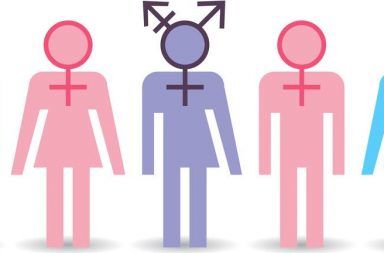What is gender identity?
Gender identity is defined as the personal concept that the individual defines for himself as male or female (or, rarely, both or not). This concept is closely linked to the concept of the gender role, which is defined as a set of personal manifestations Which reflects gender identity.
Gender identity is defined in almost all cases as a result of a set of inherent factors (ie, fundamental and not selected), external and environmental, while the gender role is reflected in the opposite side within society through observable factors such as behavior and appearance.
For example, if a person considers himself male and finds comfort by referring to his own gender in masculine terms, his sexual identity is therefore male. However, his gender role is only male if it shows the characteristics of traditional or customary males in behavior and clothing For males in particular).
The gender role is often the outward expression of gender identity. In most individuals, gender identity and gender roles are compatible, and assessing whether or not this consensus is realized (eg observing a child's involvement in activities traditionally considered incompatible with gender) is important Observation during the emergence of the child.
It is also important to know that cultural differences have a significant role in expressing the gender role of the individual. In some societies, nuances in accepted gender norms can play a role in gender identification.
The first is to define the person as a female, male or bisexual (Intersex), and the second is determined by depending on the genitals or genitals that are likely to be possessed, whether by phenotype or gene .
Sex is usually seen at birth due to the external appearance of the genitals because of the common assumption that they always represent the genotype and the condition of internal anatomical organs.
When considering the situation of bisexual individuals - often born with vaguely or vaguely defined sexual organs - in any newborn, the newborn is evaluated and a gender is selected with a view to simplifying social interactions and education.
Clinical evidence suggests that children are already born with a dominant underlying sense of gender identity. Early life provides guidance and effects that may confirm or change this bias in the brain. Usually, it tends toward an appropriate and compatible gender identity and role. Gender behaviors occur when gender identity Later on in the life of the child in a manner incompatible with his biological sex.
In general, gender-related concepts are flexible in children. Children under the age of five seem to be unaware of the concept of gender stability. For example, a child under school age may ask his teacher whether he was a boy or a girl when he was young, That he wants to become a mother when he grows up.
Research supports this early flexibility in gender perceptions in children. In a study of pre-school children, psychologist Sandra Bem showed them images of young children, so that the child was naked in the first picture.
In the second, it appears uniformly that it conforms to its gender (such as dresses and braids for girls, shirts and football for boys).
Then she asked them if the children in the first picture were two girls or girls. As for the third picture, she told them that the children were wearing their uniforms as part of a fashion game and then asked them if they believed that the children in the third picture were girls or girls, First - where the child is naked - visible.
The result was that a large proportion of children between the ages of three and five years had responded that they believed that the boy in a feminine costume in the third picture was now a girl and found that the children were able to distinguish sex in the third picture only if they knew that sexual organs were from Contribute to the description of males and females.
Another research suggests that the child concept of gender gradually develops between three and five years of age. Most children later believe that external changes in clothing and hair do not constitute a gender change and once they begin to think of gender as a stable feature they will enter it within their own identity.
During this period, the child becomes more enthusiastic to communicate with others from the same group and seeks more gender-related information, often becoming rigidly adhering to gender stereotypes. For example, children of these ages prefer to play with their gender, And games that are traditionally and traditionally associated with this gender, and continue to become between 7 and 10 years old, and then become more flexible and less stringent about it.
Therefore, identifying gender identity is a sequential process rather than a single distinct event. Differences from traditional social norms can cause harm to the child and his family. Therefore, we must remember that the chromosomes we carry define our biological gender; but they are not the only factors in gender identification.
Sources and references
https://emedicine.medscape.com/article/917990-overview#a1

موضوع جميل ......ههههههه.....رستيم
انتي شايفة نفسك من جواكي اية طيب
nice educative post. thanx for sharing .
thank you
ده الموضوع طلع كبير أوي يا تغريد... بس أكيد الحالة النفسية للشخص ورؤيته لنفسه بتأثر في أسلوبه ورؤيته لنفسه، ولو إن ده مش مايعتبرش عذر للجماعة إياهم اللي بتصرفوا بطريقة مغايرة للطبيعة وخلقتهم بإدعاء إنهم مش شايفين نفسهم من جوة رجالة أو ستات
علشان كدة بيقولك المثالية مرض نفسي ويمكن يتعالج
Good and interesting post
thank you
ـم التصويت و راح اتاكد اراجع لماذ لم يتم التصويت لك بحصاب المجموعة
شكرا منتحرمش منك